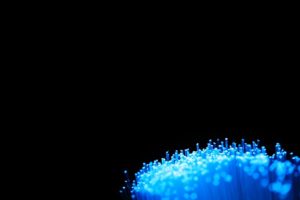
Backlighting is an essential part of many devices. From touchscreens and computer monitors to membrane switches, industrial machinery interfaces and more, it consists of a light-producing system. There are different types of backlighting, however. Fiber optic, for instance, has become a popular backlighting technology. If you’re thinking about choosing it for a device, there are a few things you need to know about fiber optic backlighting.
What Is Fiber Optic Backlighting?
Fiber optic backlighting consists of many small strands of optical fiber. Optical fiber receives its namesake from its ability to carry light. It serves as a conduit to light. Light can travel from one end of optical fiber to the opposite end. Fiber optic backlighting is characterized by the use of optical fiber, which is responsible for distributing the light across the device with which it’s used.
How Fiber Optic Backlighting Works
Unlike other types of backlighting, fiber optic backlighting doesn’t actually produce light. Rather, it distributes light. It’s simply known as “fiber optic backlighting” because it consists of optical fiber. The optical fiber used in fiber optic backlighting consists of thin strands of glass or plastic material.
Most fiber optic backlighting systems work in conjunction with light-emitting diodes (LEDs). LEDs are diodes that, when powered by electricity, produce light. LEDs don’t distribute light; they produce light. Devices are often designed with LEDs and fiber optic backlighting. The LEDs produce light, which travels through the optical fiber before being distributed across the device.
Benefits of Fiber Optic Backlighting
With fiber optic backlighting, devices won’t need as many LEDs. You can order devices with fewer LEDs if they have fiber optic backlighting. The fiber optic backlighting will maximize the illumination power of the LEDs. The LEDs won’t necessarily produce more light with fiber optic backlighting. Instead, their respective light will be distributed through the optical fiber. The bottom line is that devices won’t need as many LEDs if they have fiber optic backlighting.
Fiber optic backlighting will protect devices from bright and dark spots. Uneven brightness is a concern with backlit-illuminated devices. Depending on the type of backlighting, it may illuminate some parts of the device more than others. The end result is bright spots and dark spots on the device. Fiber optic backlighting prevents this from happening by distributing the light from the LEDs. It will take the light from the LEDs, and the fiber optic backlighting will evenly distribute it across the device.
